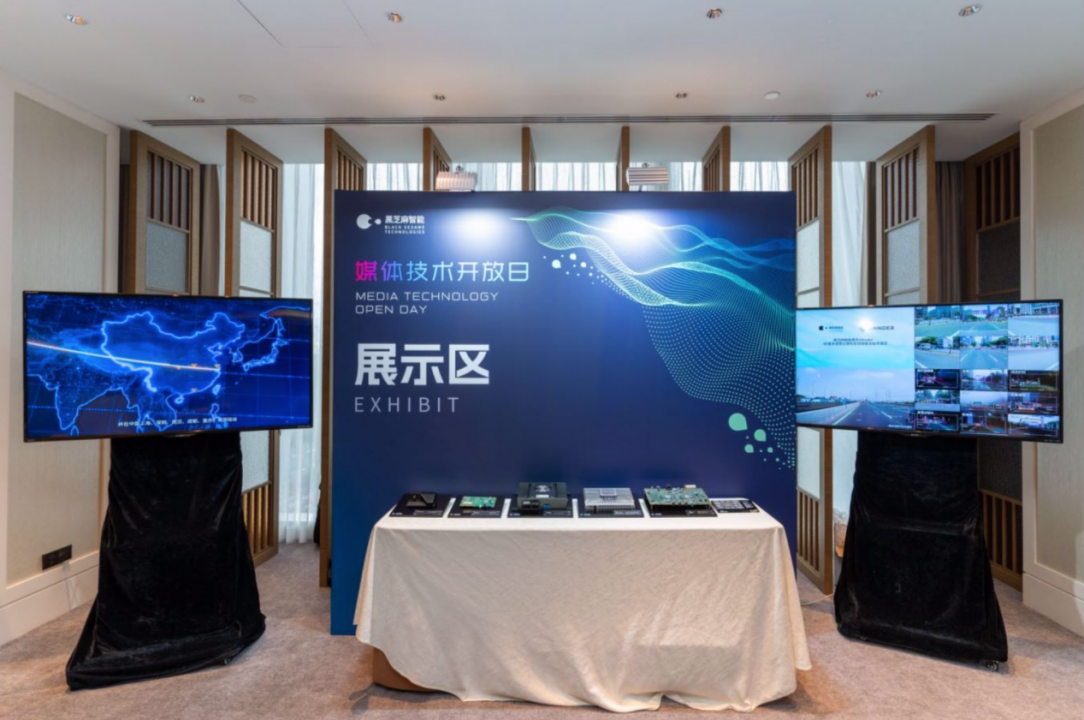According to the latest data from the China Association of Automobile Manufacturers (CAAM), in November of this year, the retail penetration rate of new energy vehicles in China has reached 36.3\%. Looking further ahead to the full year of 2022, the penetration rate of new energy vehicles will also approach 30\%.
This growth rate has already far exceeded the national plan. Previously, the “New Energy Vehicle Industry Development Plan (2021-2035)” proposed a target of 25\% penetration rate for new energy vehicles in China by 2025. It can be clearly stated that we will achieve this goal three years ahead of schedule.
In this booming industry with impressive growth, we have not only seen fierce competition and outstanding performance from companies such as NIO, but also witnessed the emergence of major suppliers like CATL. If batteries are the crown jewel in the new energy industry, then intelligent driving is undoubtedly the most important jewel in the crown of intelligentization.
Contrary to the intuition of most people, according to research reports by CICC and McKinsey, the penetration rate and growth rate of L2 or higher level ADAS (Advanced Driver-Assistance Systems) in China’s new cars are ahead of the world, and it is expected that 66\% of new cars in China will be equipped with L2 or higher level ADAS by 2025.
At the same time, in the next 3-5 years, human-machine co-driving will be the norm, given the current state where advanced ADAS cannot fully replace the driver. Whether it is L2, L2+, or L2++, the direction of effort for automobile companies and supply chains is to massively produce vehicles with these basic ADAS functions pre-installed.
The development of technology cannot be separated from the support and acceptance of downstream consumers. As the research report above shows, Chinese consumers have a higher acceptance level and willingness to pay for ADAS functions compared to the rest of the world, leading to a broad market.
The huge potential demand will inevitably drive the development of the industry chain, and as the thriving CATL shows, only local supply chains can better support the development of local car makers.
Hei Zhima Intelligence is a local intelligent driving chip company riding this tide.
We recently met Hei Zhima Intelligence offline. From the outlook of the industry trend to the development history of Hei Zhima, from the development of intelligent cars to the transformation of chip technology, we can glimpse the hidden undercurrents of local intelligent driving chip manufacturers behind the explosive growth of new energy.
Sesame Open:Xiaomi’s first investment, many car companies designated cooperation
Founded in 2016, Black Sesame Technologies has an interesting workforce from leadership to employees. Founder and CEO Dan JiZhang, previously served as Vice President of OmniVision and accumulated over 20 years of experience in vision and chip technology. Co-founder and COO Weihong Liu is the head of Bosch’s Chassis Division in the Asia-Pacific region.
Spanning the chip and automotive fields, Black Sesame has positioned itself as a company for developing car-level autonomous driving computing chips and platforms since its inception.
Black Sesame CMO YuXin Yang shared two insights with regard to the startup company. First, there are more than 500 employees at Black Sesame, and the core team comes from companies such as Bosch, OmniVision, and NVIDIA, with an average of more than 15 years of industry experience. It is fortunate to be able to integrate talents from two different fields of automotive and chip. Second, Black Sesame has not changed its major strategic policy due to capital intervention or market changes. The strategic approach of Black Sesame can be put into plain language, i.e. to take a route of surrounding cities with rural areas, relying on mid- to low-end products and cooperation with car companies for rapid mass production, and gradually launching high-end products in the future.
From the development history of Black Sesame, the company was founded in 2016, released its first chip A500 in 2019, and its second product A1000 in 2020, with rapid progress. Yang Yuxin said that Black Sesame realized in 2018 that chips are a key link in promoting the development of electronic and electrical architecture in the autonomous driving or smart car fields.
The Huashan No. 2 A1000 series chips under Black Sesame, from determining product definitions to mass production and finally reaching the vehicle, took more than three years. It is the first domestically produced large computing power autonomous driving chip to enter mass production, with computing power of 58 TOPS (INT 8) – 116 TOPS (INT 4).
Black Sesame also reached a cooperation agreement with Jiangxi Automobile Group in May this year. Multiple mass-produced models under the Sihao brand will carry Black Sesame’s intelligent Huashan No. 2 A1000 series chips. Jiangxi Automobile Group’s models are priced at around 150,000 yuan and are typical mass-produced models.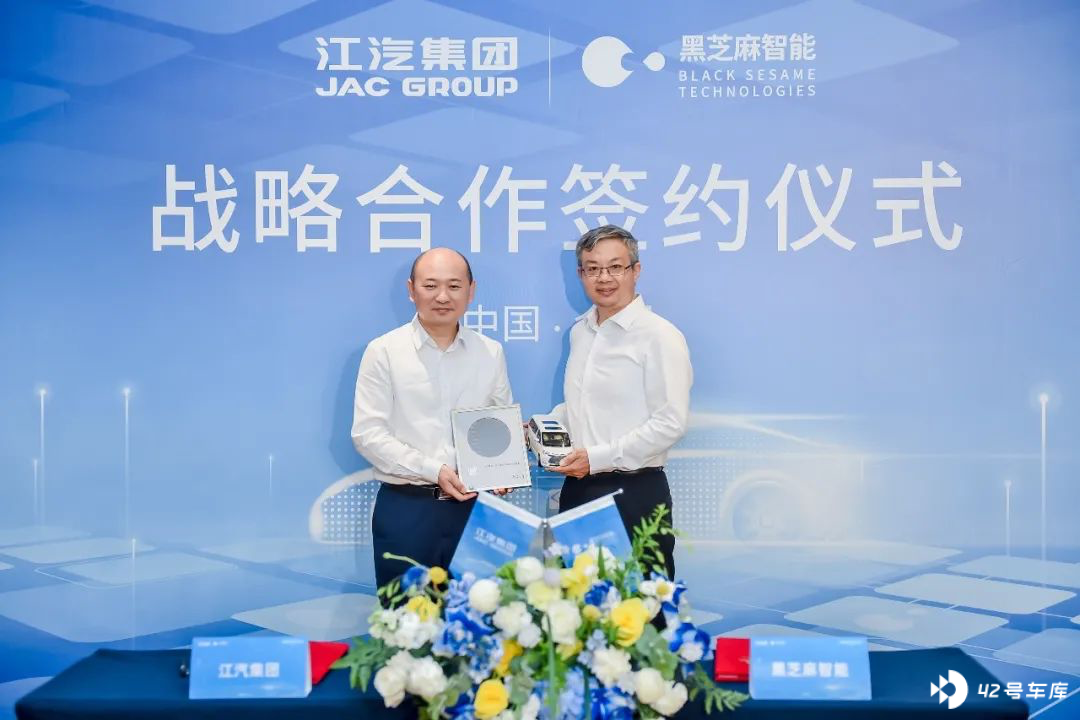
Meanwhile, according to Yang Yuxin, apart from Jiangqi, Heizhima has established cooperative relationships with over 10 designated car enterprises, including passenger vehicle enterprises such as SAIC and FAW and 20% of commercial vehicle enterprises, as well as Tier 1 companies such as Bosch, Baidu, Dongfeng Yue Xiang, T3, Junlian Zhixing, Zhongke Chuanda, and Asia Pacific, in the development of L2/3-level ADAS and self-driving perception system solutions.
As of 2021, Heizhima has released its A1000 Pro chip based on the Huashan 2nd A1000, with a single chip INT4 computing power of up to 196 TOPS. This chip is capable of supporting advanced autonomous driving functions and is designed to enable seamless transitions from parking, city driving to high-speed scenarios.
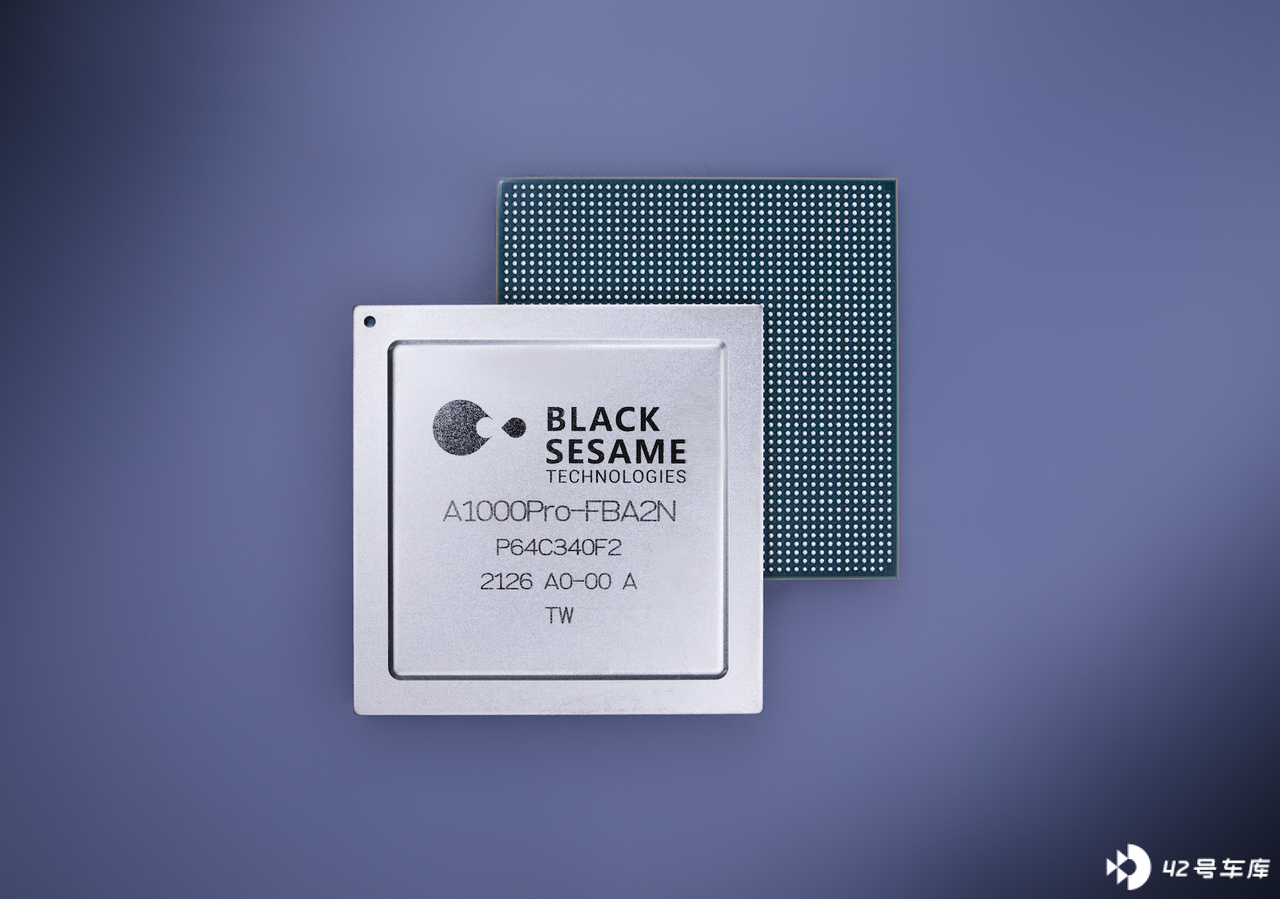
In September 2021, Heizhima Intelligent completed several hundred million dollars of strategic and C-round financing rounds. The strategic round was invested in by domestic industrial leading enterprises such as Xiaomi Changjiang Industry Fund and Fusi Automobile, while the C-round financing was led by Xiaomi Changjiang Industry Fund, followed by Wentai Warburg Investment. After this round of financing, Heizhima Intelligent’s valuation has approached 2 billion USD, becoming a unicorn in the field of automotive chips.
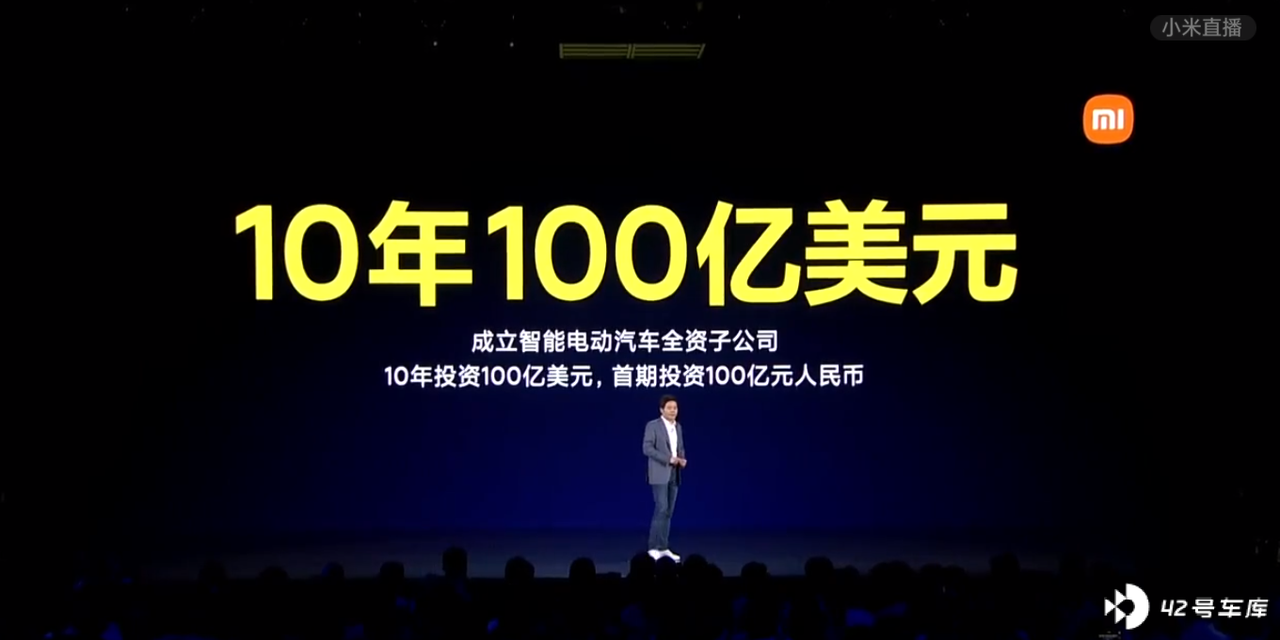
This also marks the first investment of Xiaomi in the field of automotive chips after the announcement of its car production plans. Xiaomi Cars announced that it is developing its own L4-level autonomous driving system and its cooperation with Heizhima Intelligent to help fill its gaps. In the future, Xiaomi Cars are likely to adopt Heizhima Intelligent’s self-driving computing chips and R&D platforms.
Not blindly pursuing perfection, one won’t go away empty-handed
This year is a cold winter for L4 autonomous driving companies.
Waymo, a star company in the field of autonomous driving, was valued at USD 175 billion by Morgan Stanley in 2018, but its valuation fell to USD 105 billion in 2019. By 2020, Waymo, which had already received multiple financing rounds, saw its valuation drop to USD 30 billion. Waymo shrunk by nearly 6 times from its peak valuation.# Recent news in the automotive industry
Morgan Stanley recently announced that General Motors’ subsidiary Cruise has no value. Cruise will even lead to a loss of $2 billion for General Motors annually, with this number expected to increase in the future.
On October 27, ARGO AI, a self-driving company supported by Volkswagen and Ford, announced its closure. The industry even views the closure of ARGO AI as an important turning point in the autonomous driving industry.
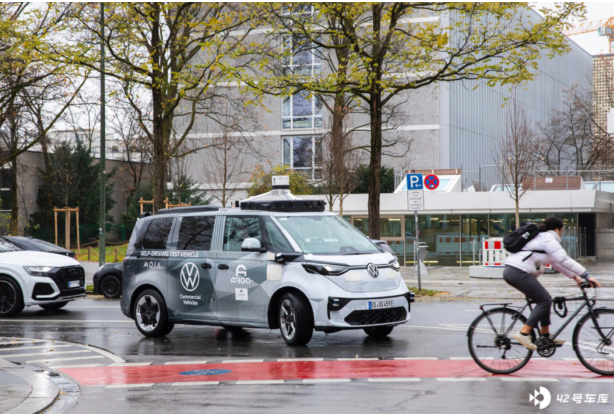
The reason for the failure of L4 autonomous driving companies is the prolonged commercialization process. “Capital is looking for a goose that lays golden eggs, not someone who draws beautiful dreams”. In this regard, Hei Zhi Ma deeply understands the truth that steady progress leads to great success.
In the words of Ding Ding, the vice president of Black Sesame Intelligence Products:
“Our chip is positioned in the low-level driving and parking integrated to high-level NOA navigation applications, perfectly matching the industry’s development timeline in automatic driving applications in terms of product maturity and time window.”

Looking at the big picture, Black Sesame has indeed ridden the wave of demand for domestic chips. On the one hand, the lack of chips is the doom’s sword looming over automakers’ heads, and no one wants to be caught with reduced production capacity. On the other hand, data shows that by 2027, the global assembly rate of vehicles with L2 or higher autonomous driving capabilities will exceed 60%.
China is expected to outpace this rate. Therefore, the domestic intelligent driving chip industry has a better commercial foundation than the L4 autonomous driving industry, which has lofty goals but lower chances of success.

One interesting fact is that NIO Capital and SAIC have also invested in Black Sesame, so why did NIO choose Orin X over Black Sesame?In terms of timeline, it takes at least three years to plan and mass-produce a new car. ET7, Fevan R7 and IM L7, which were launched this year, were basically approved in 2019. The NVIDIA Orin-X was released in 2019 as well, with a computing power of 254 TOPS at that time. For car companies pursuing advanced driving assistance capabilities and progress, there are almost no better alternatives to these plans.
As mentioned earlier, “relying on mid-to-low-end products and cooperation with car companies to quickly increase production and sales, and gradually launch high-end products” is Heizhima’s strategic policy. Therefore, Heizhima’s A1000, launched in 2020, was positioned lower than Orin in the planning stage, and aimed at larger-scale mid-to-low-end models.
The action of “gradually launching high-end products” has also been demonstrated. A1000 Pro, which has a computing power of 196 TOPS, can meet the needs of more customers. According to Heizhima Intelligent CEO Shan Jizhang’s previous remarks, Heizhima’s next-generation product will directly surpass Orin and target the mid-to-high-end market.
Therefore, for now, A1000 is very well-suited to meet the needs of its own user group. A clear trend at present is “integration of driving and parking,” which integrates L2+ driving and automatic parking functions, 360-degree panoramic view, and black box DVR function into one chip.
The 58 TOPS computing power of the A1000 chip is the highest among domestically-produced chips with mass production capacity. In addition to the conventional CPU, NPU, and neural network accelerator, the A1000 also has a large number of DSPs to handle many logical operations.
At the same time, the GPU integrated on the chip can do 3D or 2D rendering, and the rendering result can be used for parking space detection. It can better adapt to the parking space limiting device, limiting pole, ground lock, and various ground markings.Ding Ding explained that traditional parking chips often have low computing power, which may result in failure to park or detect objects such as obstacles, bollards or roadblocks because of lack of processing capacity. With the integration of parking function in A1000, the improvement in computing power will enhance the user experience.
For the cost problem of mid-to-low-end models of cars, in the past, car manufacturers’ options may have been that L2 driving and parking were separately provided by two suppliers. Now, A1000 has successfully turned the solution into a system or a box, or even a chip that can solve all the problems. From the perspective of car manufacturers, the advantage or disadvantage of cost directly determines whether they will cooperate with A1000.
Software and hardware decoupling: A business model that better serves the interests of car manufacturers
Mobileye once lost a large number of old customers due to the software and hardware integrated sales model, where the software black box did not allow car manufacturers to modify it. Although it has also turned around to adopt the software and hardware decoupling model, the computing power of the Mobileye EyeQ Ultral, which will only be available for mass production in 2025, is only 174 TOPS, which lags behind everyone’s needs.
Zhong Ming, Senior Manager of Black Sesame Intelligent System Architecture, also shared his thoughts on this issue:
“Our own algorithm development is actually a necessary process for chip verification. If our algorithm cannot run on the chip, people may not believe in the maturity of this chip.”
“Of course, we also maintain an open attitude and collaborate with more algorithm suppliers, Tier1 and car manufacturers, so that better and more algorithm developers can participate in the algorithm development or the chip landing project. This is more conducive to the entire industry, the entire chip ecology or the landing of the entire project.”
Zhong Ming also mentioned that for car manufacturers with basic self-developed software capabilities, Black Sesame also provides mature algorithms to support them.
First, there are 8 million forward-looking algorithms. Currently, almost all new domestic high-end car models are equipped with an 8 million pixel camera for long-distance target detection. For black sesame’s independently developed forward-looking perception algorithm, the main focus is on the detection of vehicles, lane markings, and targets. The algorithm not only includes the most common vehicle classification, two-wheeled vehicle detection, but also pedestrian detection.
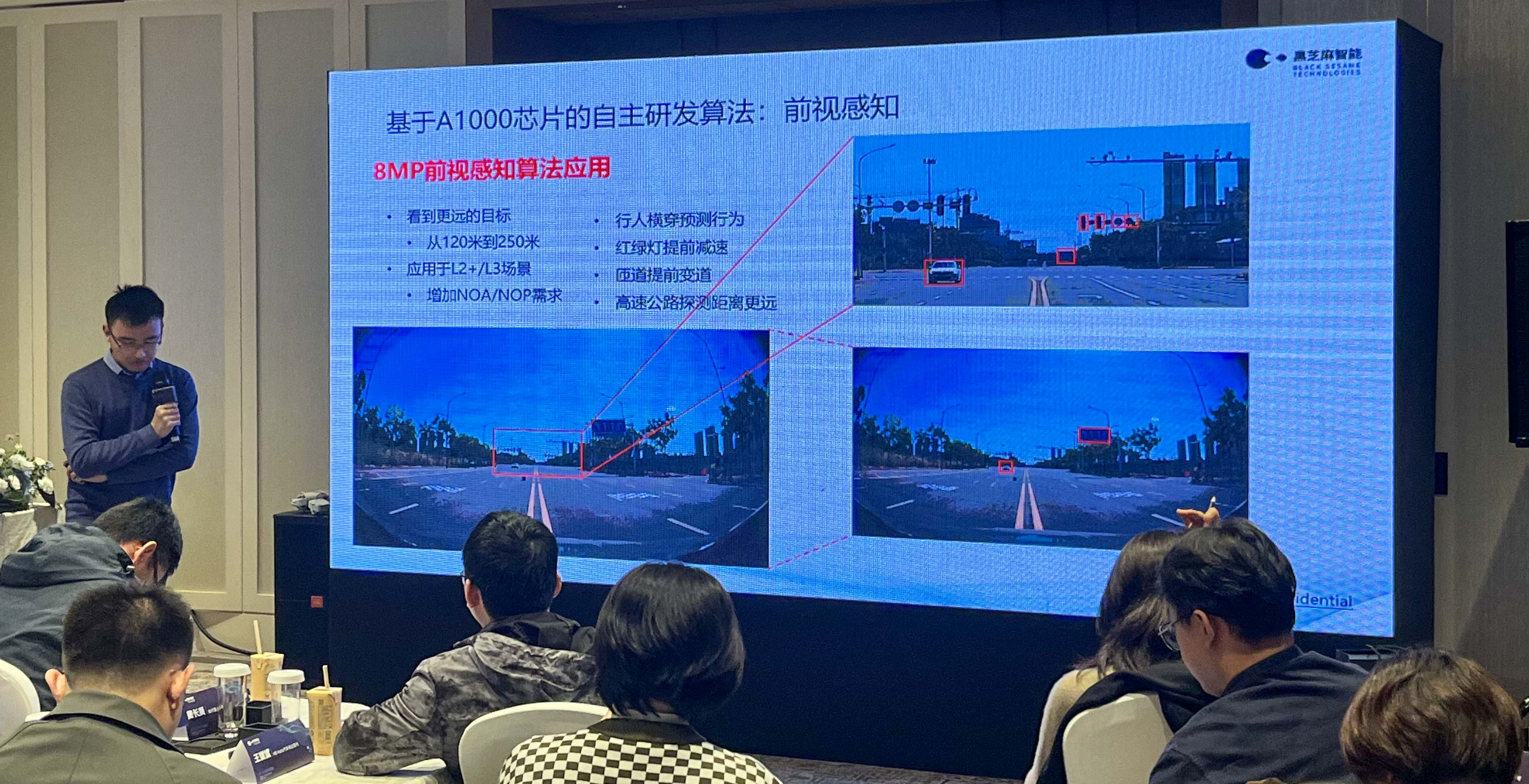
In addition to this, with a single model, Heizhima can detect traffic signs, traffic lights, light poles, license plates and other information. All of this information will be sent for further processing and fusion with the backend map or other sensors to make the entire perception result more reliable.
For ground markings such as lane markings, ramp forks, merges, and road edges, the Heizhima algorithm can accurately detect them, thereby enabling precise control of lane keeping and lane-changing processes.
For some unclassifiable targets, the Heizhima algorithm detects drivable areas, which can help detect targets that the neural network has never seen before or that involve inexplicable bumps or depressions on the ground. Even the left and right turn signals of each vehicle, as well as brake lights and other information can be detected.
In terms of the neural network, Heizhima hopes to improve visual robustness and detection accuracy. With improved robustness, the system can adapt to complex road conditions and pedestrians, including scenarios in tunnels, single-side flaws, no lane markings or lane markings obscured in congested scenes.
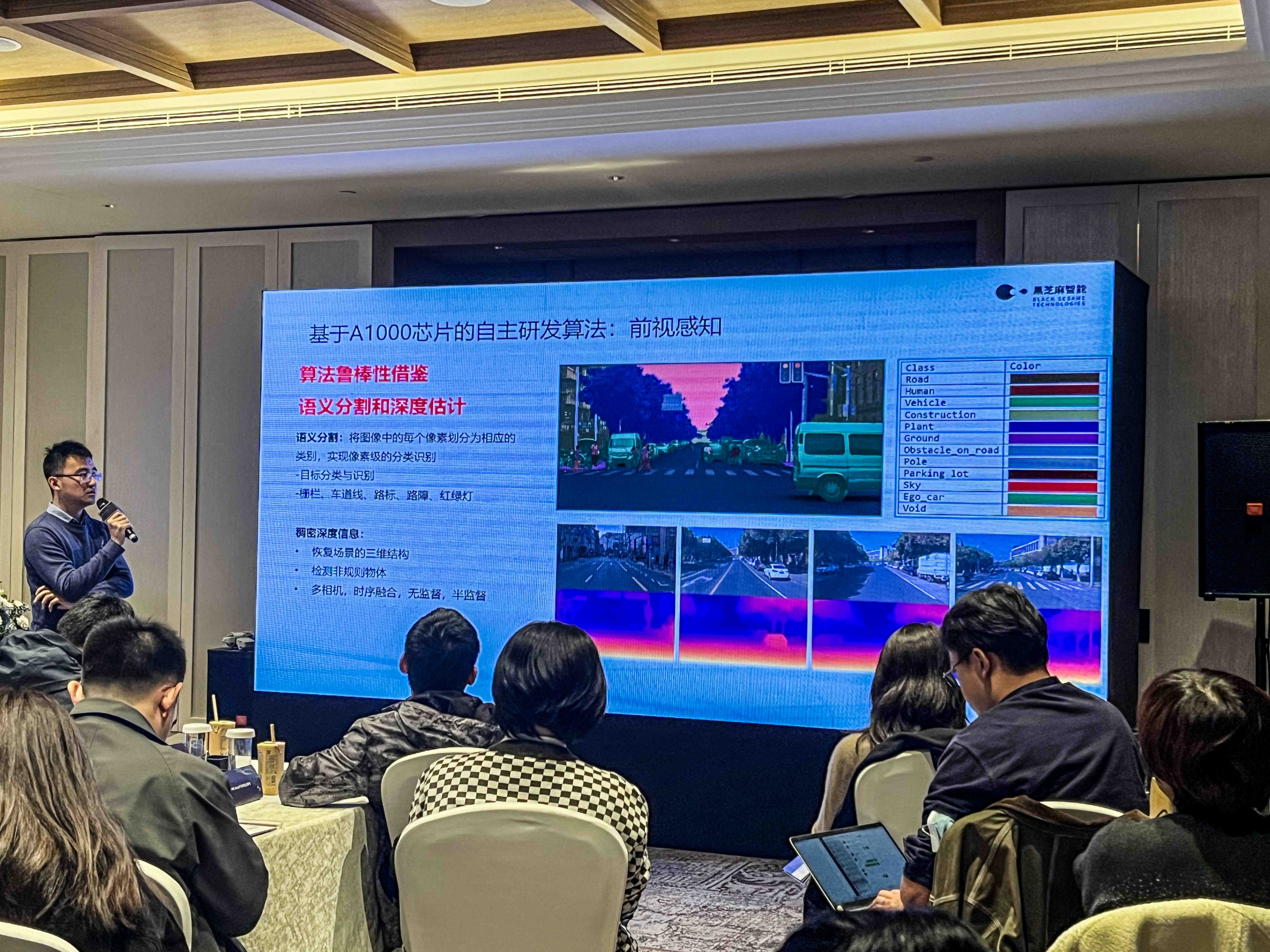
According to Wang Zhizhong, the director of the Heizhima Intelligent Product Market, in order to accelerate the landing speed of upstream customers, they can provide corresponding software parts, including operating systems, drivers on the operating system, autonomous driving frameworks, and a portion of the visual perception algorithm.
However, Heizhima software will not be bound to their own chips. If someone wants to choose independent third-party operating systems, middleware, or algorithms, Heizhima will also help to port these software to their own chips.
Great, the trend of “everything-as-a-service” has come to the chip industry.
Conclusion
Just today, Heizhima won the project of Dongfeng’s first pure electric sedan and SUV, and Dongfeng Asset Management Co., Ltd. under Dongfeng Group also made a strategic investment in Heizhima Intelligent.The customer of Heizhima asks for one more.
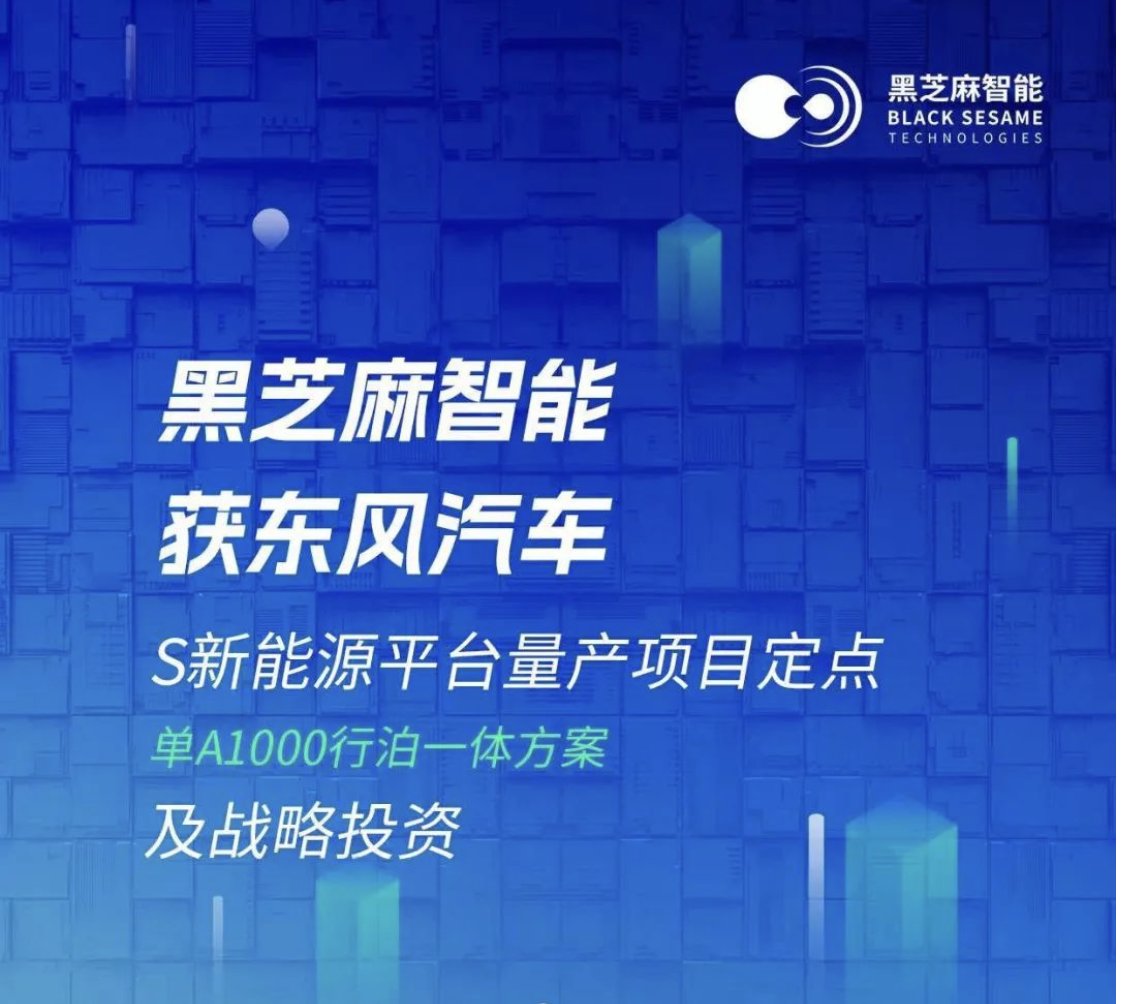
So, back to the previous discussion, the trend of intelligent electrification in China is unstoppable. In 2021, the scale of passenger car sales was about 20 million, with a penetration rate of new energy vehicles at 17\%. This year, this number has risen to around 27\%, and the traditional fuel vehicle models are being snatched from the market.
To put it in an inappropriate analogy, for new energy vehicle models, consumers value the level of intelligence and traditional “power parameters” almost equally. Compared with the growing sales of new energy vehicles, the supporting supply chain has not yet reached a mature state.
We should understand that the development of new energy vehicles has never been a castle in the air. It is precisely due to the efforts of local suppliers like Heizhima that the development can be more sustainable and our car companies will not be choked by overseas supply disruptions in the future.
This article is a translation by ChatGPT of a Chinese report from 42HOW. If you have any questions about it, please email bd@42how.com.
